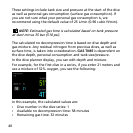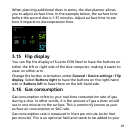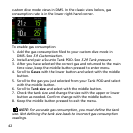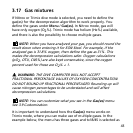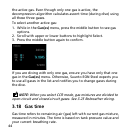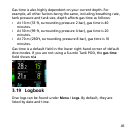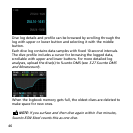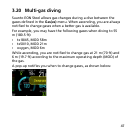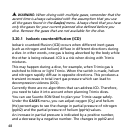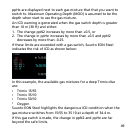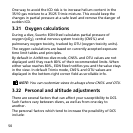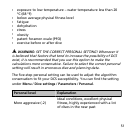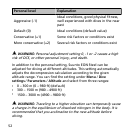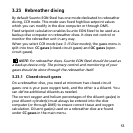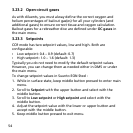
WARNING: When diving with multiple gases, remember that the
ascent time is always calculated with the assumption that you use
all the gases found in the Gas(es) menu. Always check that you have
only the gases for your current planned dive defined before you
dive. Remove the gases that are not available for the dive.
3.20.1 Isobaric counterdiffusion (ICD)
Isobaric counterdiffusion (ICD) occurs when different inert gases
(such as nitrogen and helium) diffuse in different directions during
a dive. In other words, one gas is being absorbed by the body while
the other is being released. ICD is a risk when diving with Trimix
mixtures.
This may happen during a dive, for example, when Trimix gas is
switched to Nitrox or light Trimix. When the switch is made, helium
and nitrogen rapidly diffuse in opposite directions. This produces a
transient increase in total inert gas pressure which can lead to
decompression sickness (DCS).
Currently there are no algorithms that can address ICD. Therefore,
you need to take it into account when planning Trimix dives.
You can use Suunto EON Steel to plan your Trimix usage safely.
Under the
GASES
menu, you can adjust oxygen (O
2
) and helium
(He) percentages to see the change in partial pressure of nitrogen
(ppN2) and the partial pressure of helium (ppHe) values.
An increase in partial pressure is indicated by a positive number,
and a decrease by a negative number. The changes in ppN2 and
48



